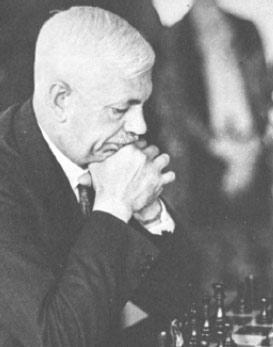
Sir George Alan Thomas, 7th Baronet was a British badminton, tennis and chess player. He was twice British chess champion and a 21-time All-England badminton champion. He also reached the quarterfinals of the singles and the semifinals of the men's tennis doubles at Wimbledon in 1911. Badminton's world men's team championships cup, equivalent to tennis' Davis Cup, is named Thomas Cup after him. Thomas lived most of his life in London and Godalming. He never married, so the hereditary Thomas baronetcy ended on his death.

Maia Chiburdanidze is a Georgian chess Grandmaster. She is the sixth Women's World Chess Champion, a title she held from 1978 to 1991, and was the youngest one until 2010, when this record was broken by Hou Yifan. Chiburdanidze is the second woman to be awarded the title of Grandmaster by FIDE, which took place in 1984. She has played on nine gold-medal-winning teams in the Women's Chess Olympiad.

Vera Francevna Mencikova, was a Russian-born Czechoslovak chess player who primarily resided in England. She was the first Women's World Chess Champion from 1927 to 1944 and the longest-reigning women's champion in history. Her eight world championship wins are the most of all time, and only Emanuel Lasker had a longer reign as world champion.
Susanna "Sonja" Graf was a German and American chess player. She was a women's world championship runner-up and a two-time U.S. women's champion. In 2016, she was inducted into the World Chess Hall of Fame.

Lyudmila Vladimirovna Rudenko was a Soviet chess player and the second women's world chess champion, from 1950 until 1953.

Elisaveta Ivanovna Bykova was a Soviet chess player and twice Women's World Chess Champion, from 1953 until 1956, and again from 1958 to 1962. She was awarded the titles of Woman International Master in 1950, International Master in 1953, and Woman Grandmaster in 1976. In 2013, she was inducted into the World Chess Hall of Fame.

The Women's World Chess Championship (WWCC) is played to determine the world champion in women's chess. Like the World Chess Championship, it is administered by FIDE.

Albert Becker, also known as Alberto Becker, was an Austrian–Argentine chess master.
Regina Gerlecka was a Polish chess player.

Róża Maria Herman was a Polish chess player. She was awarded the title International Woman Master by FIDE in 1950.
The Interregnum of World Chess Champions was the period between March 24, 1946 and May 17, 1948.
Salome Reischer was an Austrian chess player.

Chantal Chaudé de Silans was a French chess player and Woman International Master.
The below is a list of events in chess in the year 1944.
Mary Dinorah Gilchrist was a Scottish chess player.
The first Women's World Chess Championship took place during the 1st Chess Olympiad, held from 18 to 30 July 1927 in London. It was organized by FIDE and was played as a full round-robin tournament. Vera Menchik won the championship, conceding only half a point in her 11 games. The final results were as follows:
The Women's World Chess Championship 1934 was held in Rotterdam in the Netherlands.
While the World Chess Championship title, contested officially since 1886 and unofficially long before that, is in theory open to all players, it was for many years contested solely by men. In 1927, FIDE therefore established a Women's World Chess Championship exclusively for female players. Like the "open" title, the format for the women's championship has undergone several changes since then, the most important of which are described here.

Elena Lukauskienė, née Stankevičiūtė, married Raclauskienė, also Raclauskienė-Lukauskienė, was a Lithuanian chess master. She was a two-time Lithuanian Women's Chess Champion and a participant at the Women's World Chess Championship (1939). For saving two Jewish children during the Holocaust in Lithuania, she was recognized as the Righteous Among the Nations in 2006.

This article is about the participation of women in chess and its culture.











